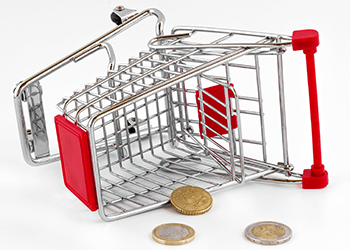 It’s not really “shrinkage” any more. It’s “total retail loss.” And by moving beyond the more blurred confines of what traditional retail shrinkage meant in years past, today’s loss prevention pros now have a better and more focused barometer on how losses are both defined and measured under the more comprehensive “total retail loss.”
It’s not really “shrinkage” any more. It’s “total retail loss.” And by moving beyond the more blurred confines of what traditional retail shrinkage meant in years past, today’s loss prevention pros now have a better and more focused barometer on how losses are both defined and measured under the more comprehensive “total retail loss.”
A report recently published by the Retail Industry Leaders Association strongly suggests that retail shrinkage, a popular category heading for over 100 years, has become largely an obsolete term. Because of its catch-all and lengthy multi-industry usage, “shrinkage” has now become too unclear and indistinct.
 The term has become neither an accurate descriptor of loss nor a useable benchmark for retailers to weigh their own loss-related issues. Some companies were only using shrinkage to describe losses uncovered via discrepancies in cash and inventory counts, while others would add other more varied types of loss acquired through other recording methods.
The term has become neither an accurate descriptor of loss nor a useable benchmark for retailers to weigh their own loss-related issues. Some companies were only using shrinkage to describe losses uncovered via discrepancies in cash and inventory counts, while others would add other more varied types of loss acquired through other recording methods.
Should products being taken off the shelves because they are going out of date also be considered shrinkage? How about those with newly reduced prices, thus bringing in less cash? Or products damaged somewhere along in the supply chain? Perhaps errors in scanning at the POS? Price-matching to a lower competitor price? Compensation for poor service, etc.? So many variables all contributing to the ambiguity that is shrinkage.
More pointedly, from a loss prevention view, the limitations of “shrinkage” have often shown to be unreliable indicators of risk – making informed choices for present and future loss prevention programs that much more difficult and unfocused.
The key to defining total retail loss lies in the distinction between the cost of doing business and the loss experienced while doing business. The report chose to describe both lines of thought this way:
Using the above parameters, loss prevention professionals can now zero in on genuine “loss” events (both in the areas of detection and prevention), while leaving the “costs” events to be addressed by general or operations management.
Sometimes, the areas separating loss from cost can be a little grey. These instances are characterized as “margin eroders.” Some examples include customer compensation and guarantees, staff discounts, low price matching guarantees, product markdowns, et al. While these might seem to lean on the side of a “cost” of doing business, it’s reasonable to see some loss prevention application in some of these examples.
Assembled your separate loss and cost lists? Good! The hard part’s over. Now, focus on just your loss list. The next step would be getting it categorized, sequenced, and prioritized. To make things easier, the report suggests assembling the activities that can be:
From there, it’s recommended that the activities – all known losses rather than the unknown ones – be placed in either malicious or non-malicious categories. For store-level environments, here’s how they run:
These categories (and the measurements they reveal) can also be applied to the retail supply chain, e-commerce, and corporate levels as well.
This perception of total retail loss may take a few years for you to compare your findings with other similarly sized and related companies. There’s a level of “granularity” and introspection here that most companies would not be inclined to participate in – not yet, at least. What it can do right now, however, is provide you a more focused gauge in understanding your own landscape of retail loss and how you are presently managing it. Certainly a clearer path to real loss prevention can be found here than in “retail shrinkage.”
To put a number on it, you could, for example, total up the sum of the losses noted in your list within a certain period. Then weigh that figure versus the overall turnover of the business, or perhaps as a proportion of the profit margin, all within a similar timeframe.
However you choose to perceive and measure your own total retail loss, you no doubt spend more time and attention tending to the area of cash loss. There are few areas that loss prevention and store managers are more sensitive to. And for good reason: most instances of internal theft occur at the POS. The processes and procedures installed, no matter how well intentioned, can leave openings where money either in a cash drawer or in some state of transit may still be vulnerable. Keeping tabs on this precious cargo has and will always be a priority with the dedication of loss prevention pros, store management and engaged employees, as well as the utilization of proven cash management devices such as the Tellermate T-ix Money Counting Machine or innovative intelligent cash drawers.
By identifying your own “manageably measurable” categories of loss, Total Retail Loss (rather than the limited “retail shrinkage”) gives you both a format and a focus for better management and ROI of the loss prevention activities you already use or are thinking of pursuing. And subsequently, better LP management decisions can be made that benefit not just a department or two, but the entire company.
Looking to reduce loss in your business? Learn more about some of the more “popular” cash scams that lead to cash loss, and how to protect your business from them.